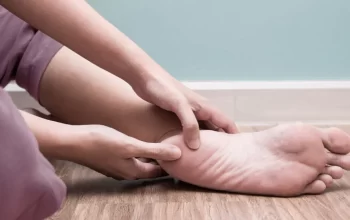Rehabilitating after surgery involves more than simply building strength; rehabilitation involves increasing range of motion and improving overall mobility through techniques like joint mobilization.
Movement helps reduce swelling, prevent blood clots and keep patients healthy. Furthermore, movement improves mood while teaching them new ways of managing pain.
1. Stay Active
Rehabilitation after knee replacement or rotator cuff surgery is an integral component of recovery. Although rehabilitation may last from one month to over a year, it’s essential that patients remain active.
Walking will increase blood flow, which is key for healing. Furthermore, moving will lower your risk of blood clots which could be potentially lethal.
Start slowly by starting with light exercises and gradually increasing their intensity and duration over time. Listen to your body, never pushing too hard; seek help from family, friends, or therapists as necessary; they may help regain basic skills such as cooking, showering or dressing which will speed up recovery processes and make life simpler for you.
2. Keep Moving
Movement during recovery can help avoid complications like blood clots or delayed healing of surgical sites, but it is equally important to listen to what your body tells you – pushing through discomfort can result in further injury and extend recovery times.
Physical therapists will assist in your return to movement safely, helping prevent injury by gently guiding you back into movement. Movement helps improve circulation and decrease pain around surgery sites.
Learn to control falls and balance issues after surgery – something which is all too often an issue after rehabilitation – which could save your life if living alone or in a nursing home. Recruit help for daily tasks while prioritizing healthy food such as lean proteins, fresh produce, whole grains, etc.
3. Don’t Overdo It
Rehabilitation after surgery typically entails working with a physical therapist who will guide you through various therapeutic exercises designed to aid your body’s healing process. Since recovery journeys differ depending on individual factors, you should visit any potential rehab facilities before making your initial appointment, to make sure that they offer tailored and individualized approaches tailored specifically for you.
Rehabilitation following surgery can speed the healing process, but it still takes time. A minor procedure such as carpal tunnel release could take as much as 12 months for complete healing. By following these tips you can shorten your rehab time and return to what makes life fulfilling faster.
4. Get Plenty of Rest
Many surgical patients spend considerable time resting after surgery, which can cause stiff muscles and joints. This increases your risk for accidental falls, loss of balance and other injuries or health problems; physical therapy programs aim to keep muscles flexible to improve mobility and avoid complications like these.
Attaining full compliance with your doctor’s orders and attending all scheduled appointments is of utmost importance for a smooth recovery experience. Reaching out for support from friends and family when needed allows you to focus on healing without distraction from other matters at home; considering short-term rehabilitation centers with nurses available around the clock might even help further expedite this process.
5. Talk to Your Doctor
Staying healthy is key to a swift recovery, from following doctor’s orders to using non-drug pain relief methods and getting adequate rest and eating a well-balanced diet. Furthermore, maintaining your mental wellbeing is also paramount; doing so may increase commitment to rehabilitation programs that may facilitate faster healing times.
If your surgery requires rehab, treatment often begins immediately at the hospital and continues in either an outpatient physical therapy facility or with home visits by physical therapists who come directly to you. Rehabilitation will teach you to move safely while building strength in the part of your body where surgery was performed; additionally it will teach how to manage with crutches, slings or other devices in the home environment.





